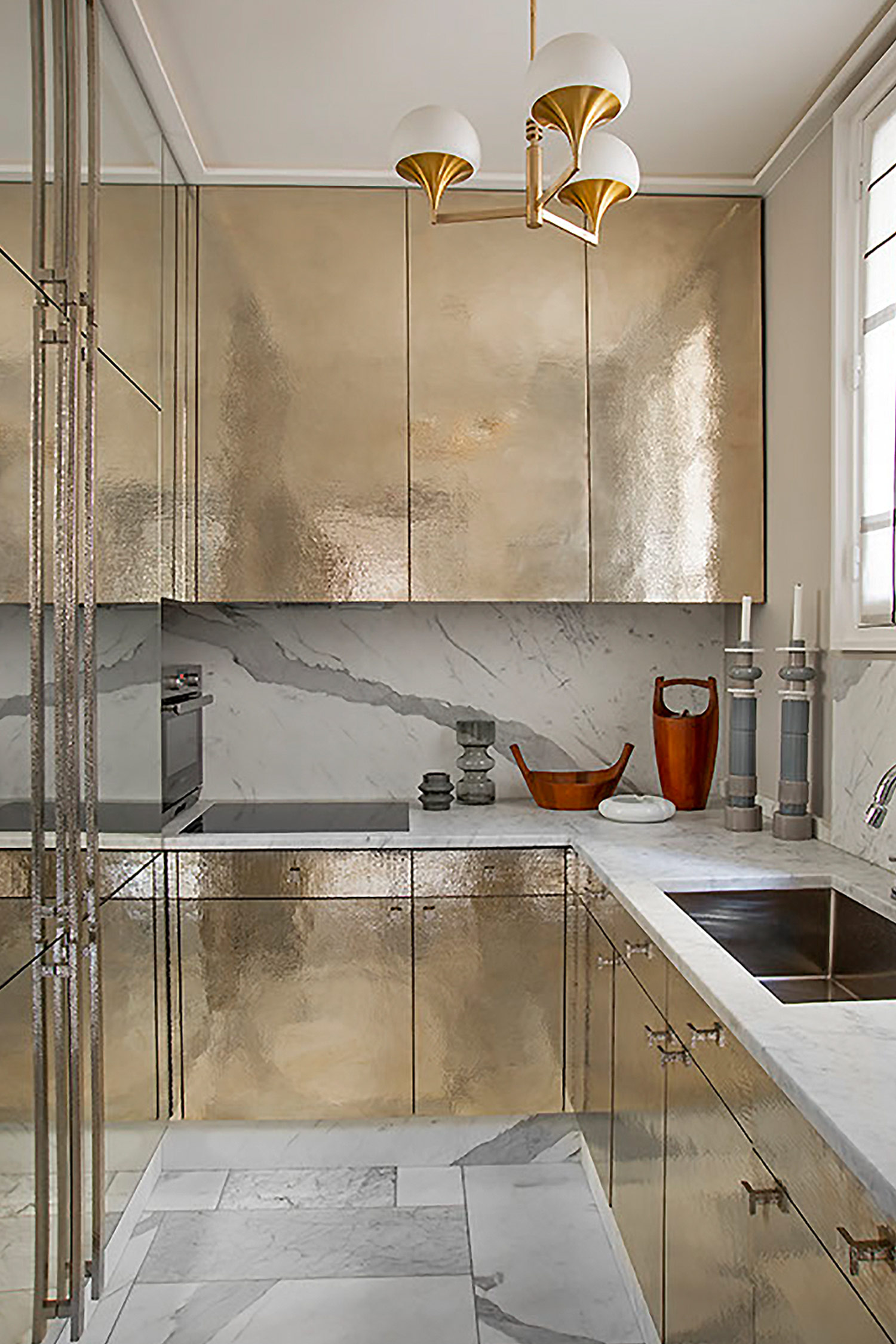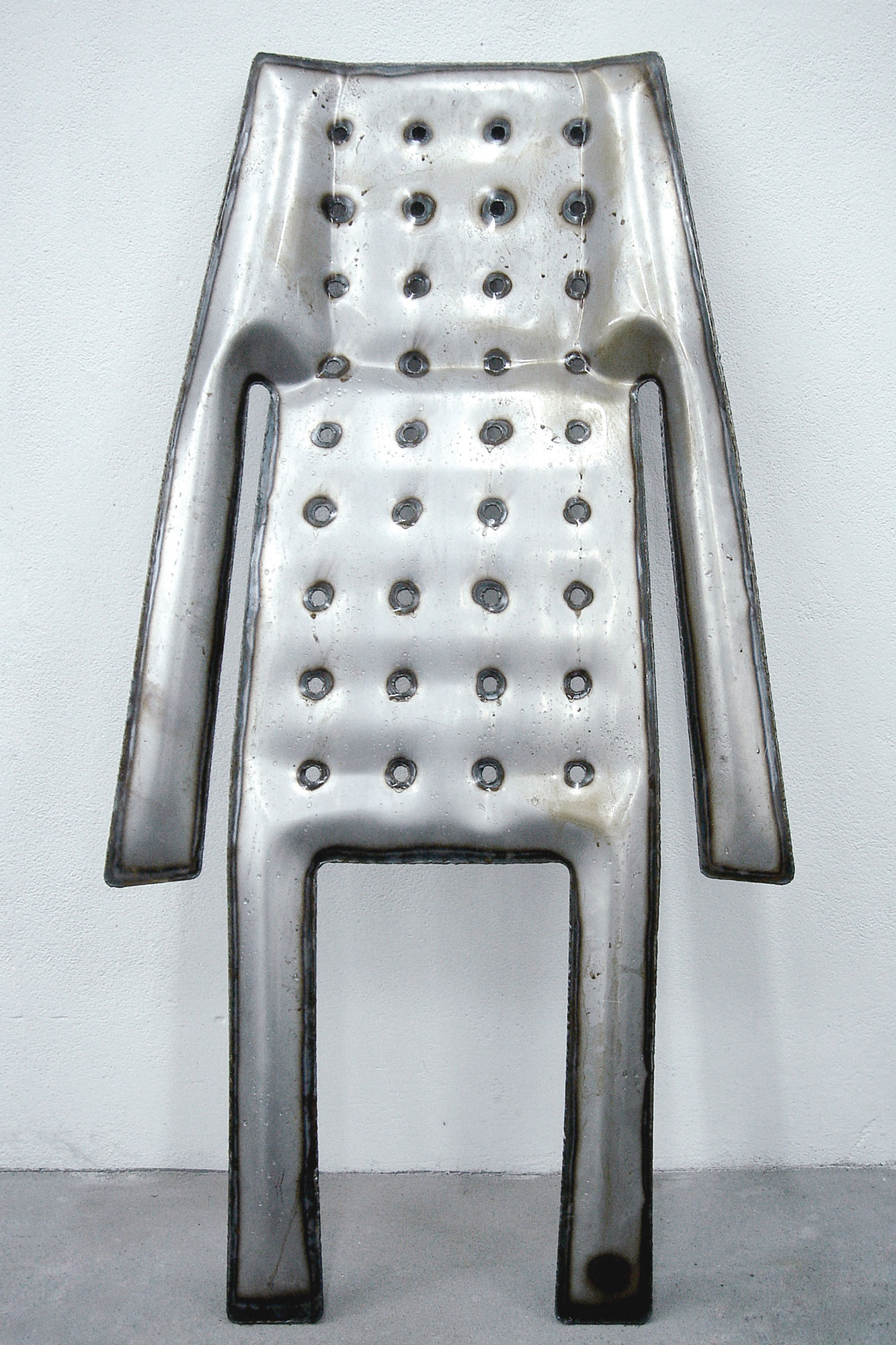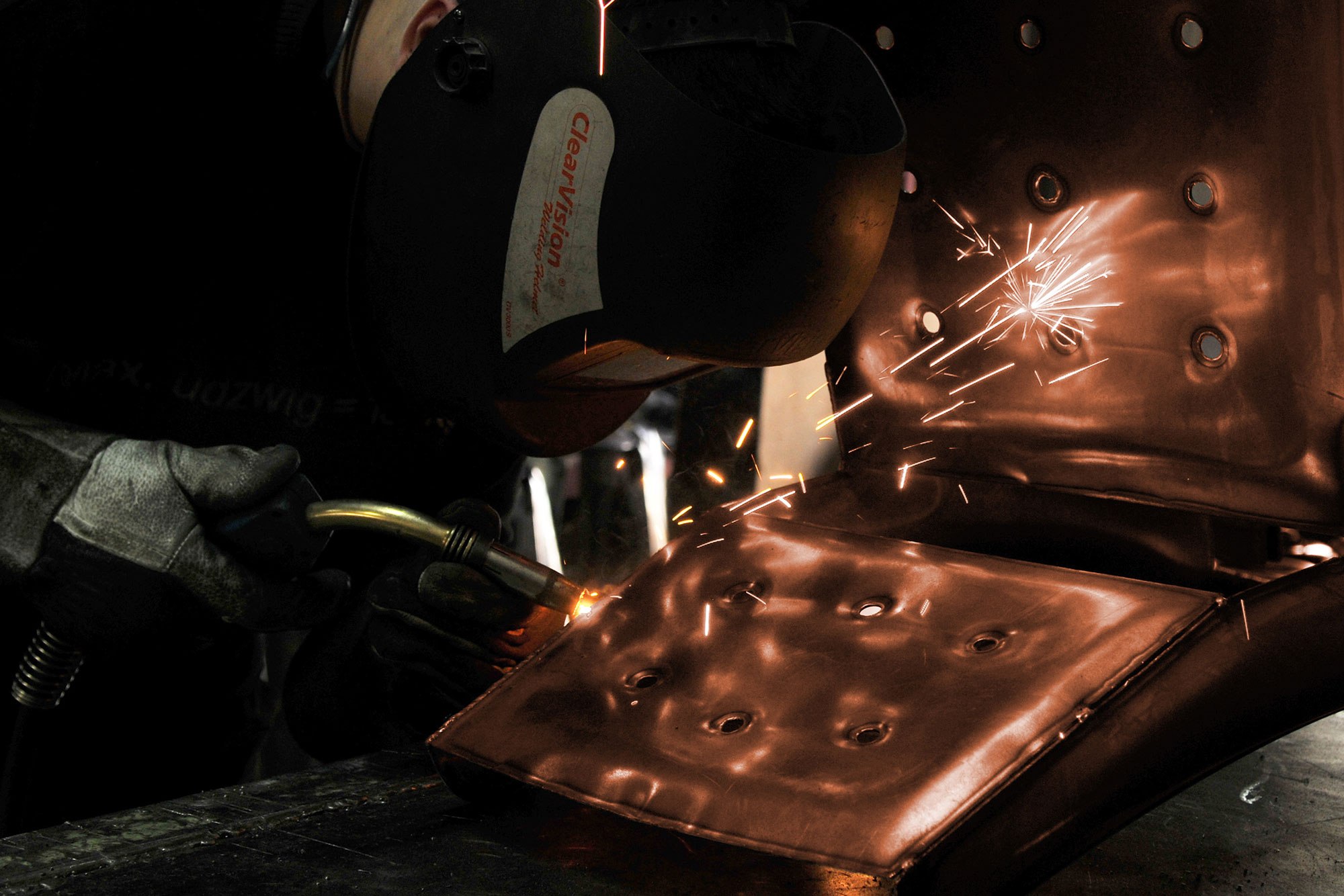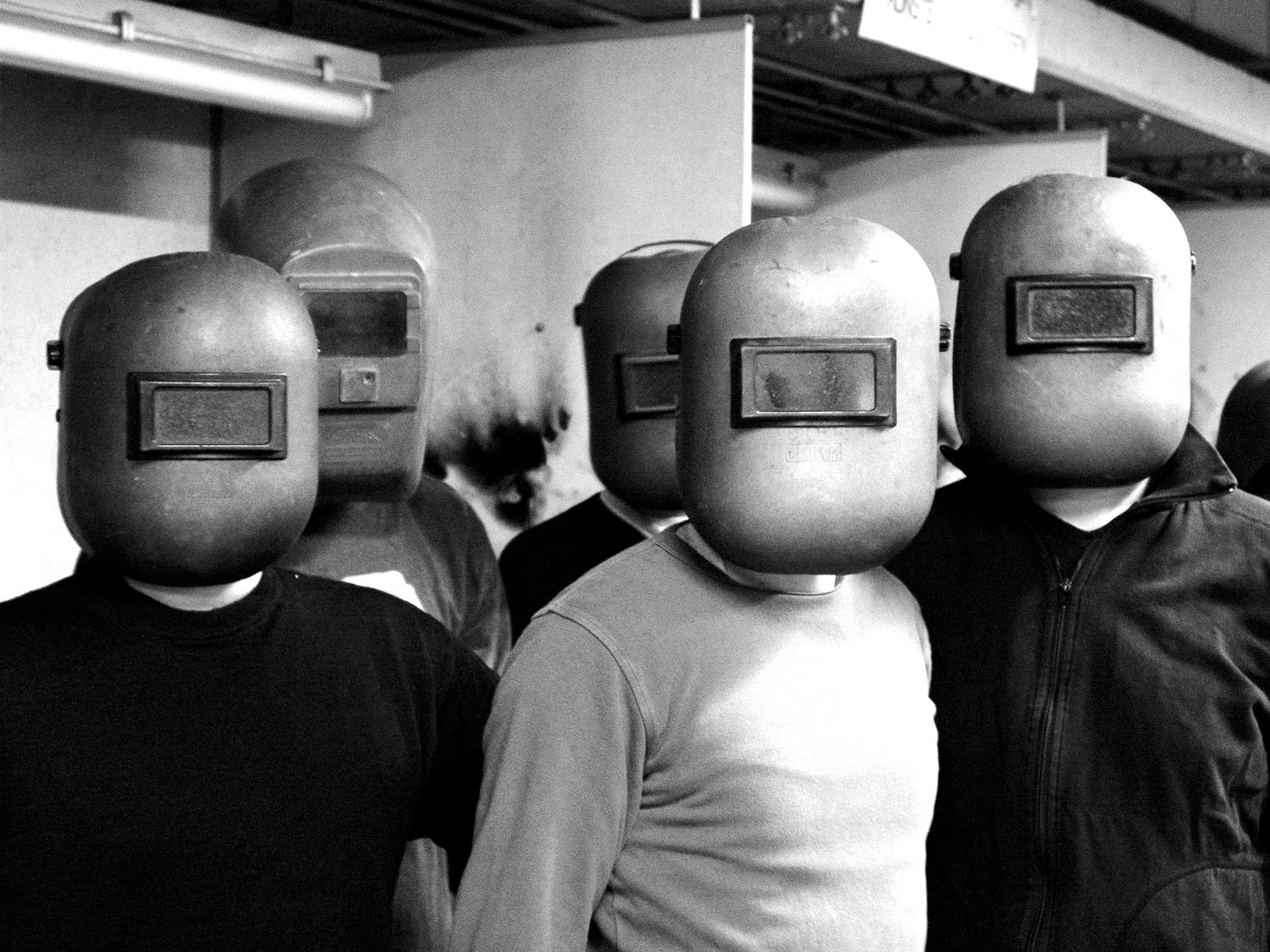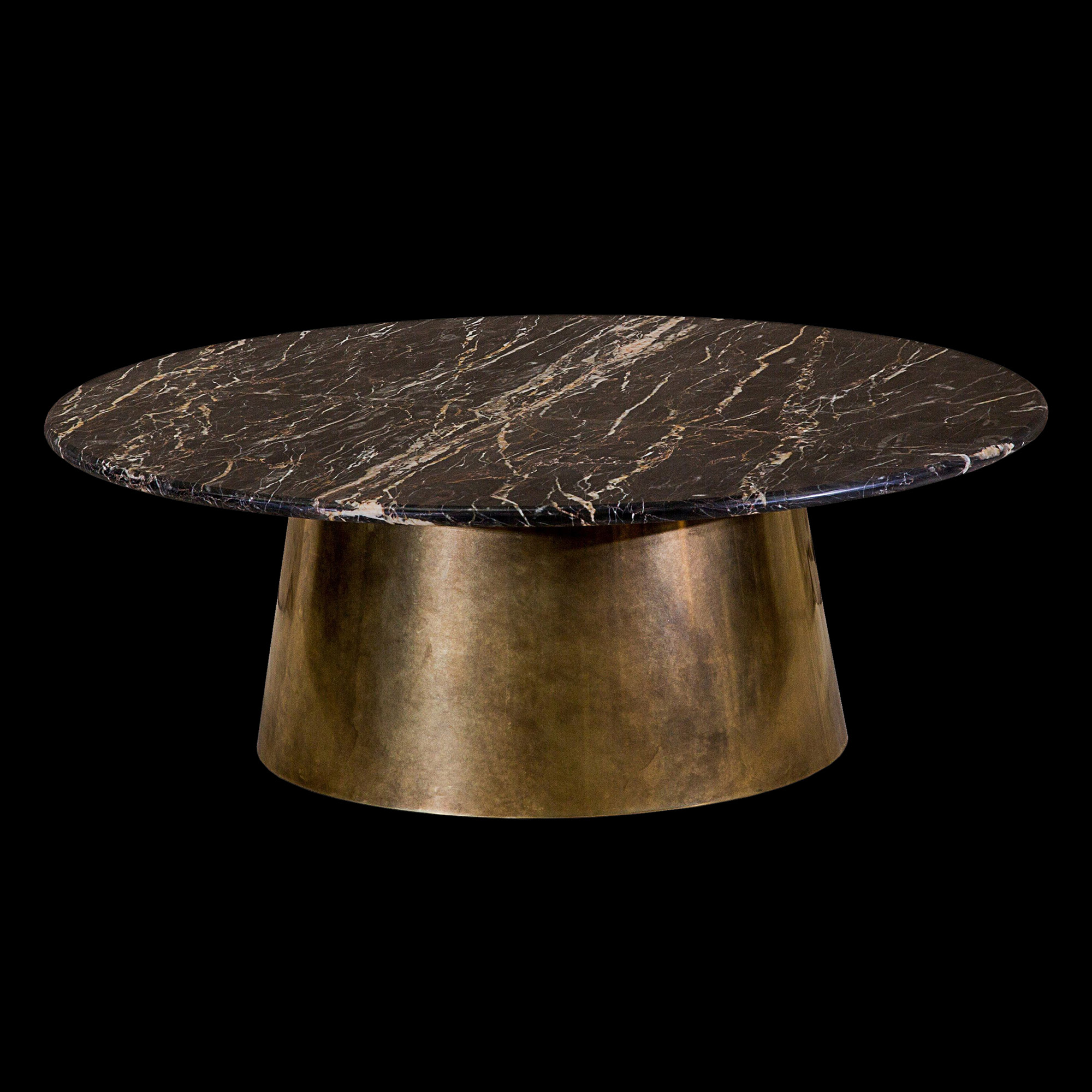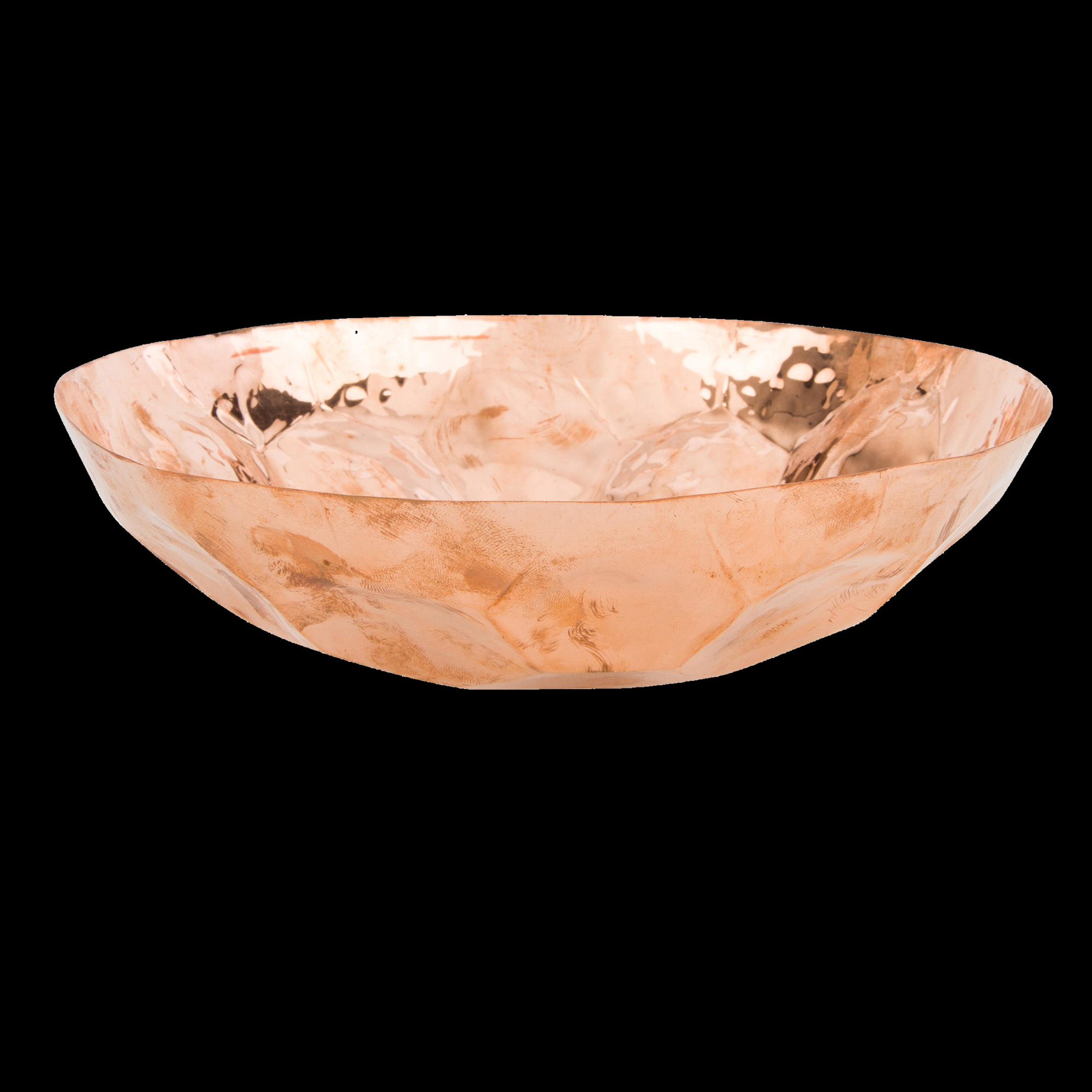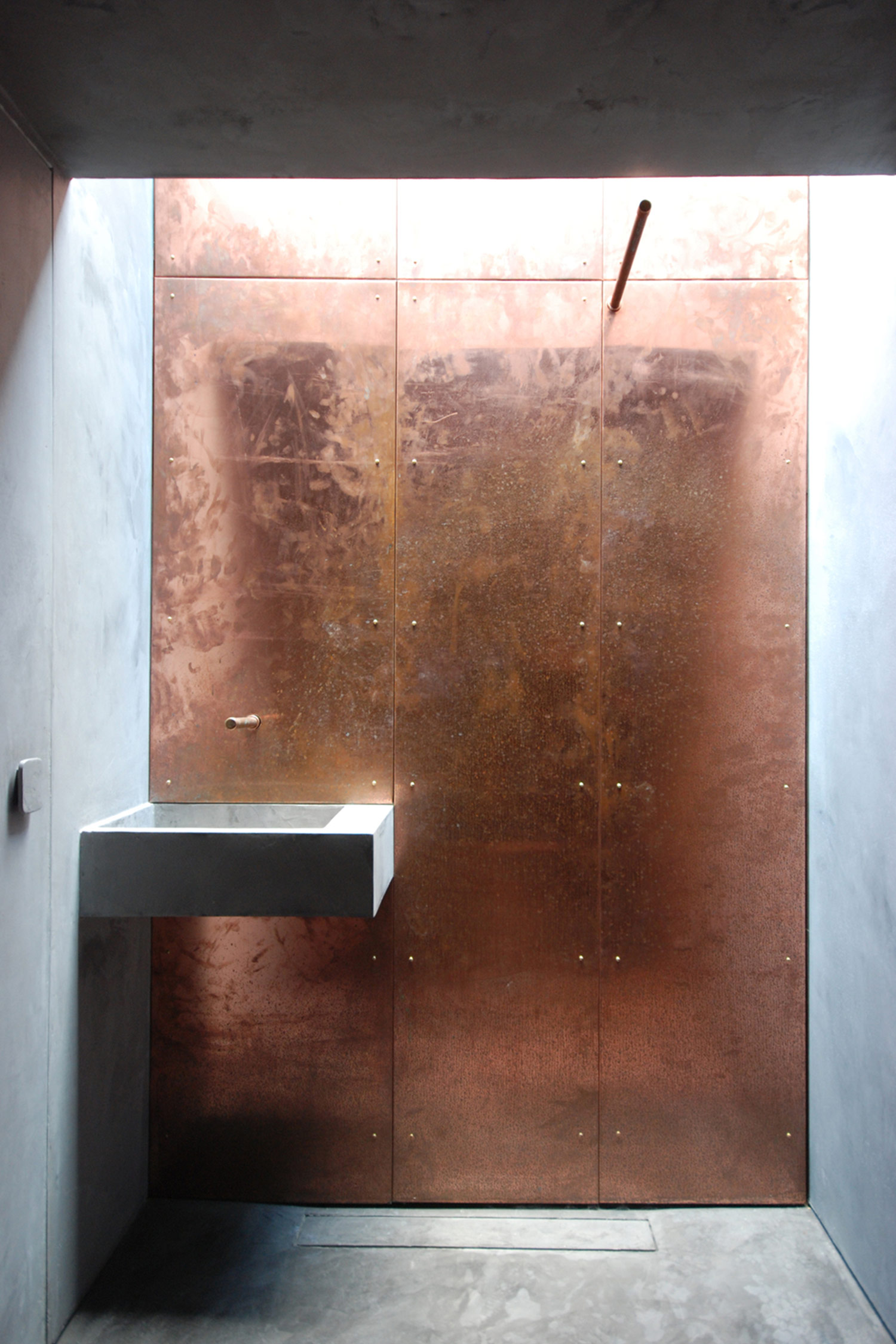«Heavy Metal – glittering prospects»
DESIGN Culture
Joan Billing & Samuel Eberli • 04.12.2018
During the renaissance of handmade and old-fashioned, tactile products, metals are being rediscovered and have become a hot topic of interior design, architecture, design and fashion.
The new warmth for our society
Colour and material trends reflect the state of our feelings and desires in society. While warm metals have accompanied humans over the centuries, this only really changed through industrialisation: As a result of the demand for new materials and visual effects, they were replaced by cool materials such as steel, chrome, aluminium, glass and concrete. These materials experienced their first highpoint during the era of German modernism of the 1920s with the “Bauhaus”. Another peak was experienced by cool metals in the 1980s and the futuristic years of the early 21st century. At the turn of the century, white, minimalist fittings made of chrome, aluminium and glass provided a futuristic, somewhat cool atmosphere that was sometimes reminiscent of a laboratory environment. However, we are looking for new warmth in our society and our interior designs. Metals such as gold, brass and copper are eminently suitable for this. They are returning in all their glory because they stand for old values and traditions. Whether untreated, matt or oxidised, we are increasingly finding them in architecture, interior design, beauty and fashion. They create the tactile, natural earthiness, which our society needs today. And the enthusiasm for them will only increase over the coming decades.
Gold – the colour of the future
Already in ancient cultures gold was the symbol for earthiness, strength and wisdom. Kings and warriors decorated themselves with the valuable metal as a sign of wealth and power. In many cases gold represented the sun and therefore the power of life, warmth or light. It symbolised hope, happiness, optimism and trust. Even today this valuable element still more than ever represents security in times of economic uncertainty. Gold, this mystic metal, found in small gold particles, in the shape of flakes, grains or larger nuggets, has been coveted by craftsmen since the Bronze Age. Thanks to its malleability, it can be worked on in wafer-thin layers. This had enabled gold to become extremely popular in refining gourmet dishes or sophisticated cocktails over the last few years. We enjoy gilding our everyday lives because this makes us literally increase its value.
Fashion such as metal sculptures
However, gold has also found its way into fashion and has been interpreted in many different ways over the last few seasons. While the shiny textiles were once only reserved for the nobility, celebrities and fashion designers took ownership of them a while ago. What was once regarded as the wardrobe for festive and celebratory occasions, became normal evening wear, later club fashion, and in the meantime the sparkling metal effects have become part of the trend in our everyday lives. We now think a soft, grey cashmere jumper combined with a metallic-gold sneaker for the office is completely normal. The new feature is that metallic fashion is no longer reserved only for the Christmas winter season. We now also like combinations of gold and white in the spring and summer. The metallic-look is definitely represented in every season. We love the shiny gloss and would like to sparkle every day.
Fashion designers have now become like sculptors and want to metallise, patinate and gild our clothing and accessories as they would a sculpture. This has led to the techniques of handmade craftsmanship making strong inroads into the world of textiles. Fashion is using its repertoire of processing techniques such as polishing, grinding, smoothing and hardening. This is making the fashion silhouette sculptural as can be seen at Constantin Brancusi or voluminous à la Henry Moore. We can encounter this new world of textiles equally in haute couture and in sportswear, which appears even more modern and futuristic as a result. The metallic look is therefore assuming a new role. Cosmetics have also been gripped by the luxurious, metallic sparkle – starting with eye shadow, nail varnish, day cream and lipstick right up to body lotions. None of the areas of our life can escape the sparkling splendour, everything shimmers like a valuable piece of jewellery from the past. Fashion designers appear to not be able to have enough of this upgrade.
Glittering times
International furniture trade fairs from Milan to Paris and Cologne are clearly focussing on metallised visual effects and therefore showing that metal is no short-lived trend. It’s refreshing to see the connection between calm, Scandinavian appearance made of natural materials, which has become so widespread over the last few years, and the metal trend. Metals are therefore mutating into the absolute favourite material of designers and manufacturers. This development is certainly not only possible following the re-birth of handmade crafts, but also through the new design generation, in which various disciplines such as craftsmanship, design, high-tech and art are merged together. A good example is Sebastian Herkner, who with his «Bell Table» side table celebrates this idea precisely and the craftsmanship combines the beauty of copper with glass. Also the copper-coloured «Chippensteel» chair blown up with internal pressure by the designer Oskar Zieta is reminiscent of a sculpture by an artist and can be mentioned in this context.
Chippensteel 0.5 chair made of copper sheet design by Zieta Prozessdesign Studio. Photography: ©Zieta Prozessdesign Studio
The copper-hype among designers
The «Copper Shade» ball-shaped lamp by Tom Dixon from 2005, which has now become a design classic, can be regarded as one of the triggers for the metal hype in the field of interior design. With «Eclectic» – his very own product range for kitchen and living accessories made of copper and wood – Tom Dixon generated a great deal of interest with the latter at international trade fairs. Since then copper not only decorates saucepans, but also hand-held mixers, keys, crockery, cocktail shakers, metal dustbins, cutlery or the copper-coloured Thermos flask from Stelton, to mention but a few examples. The Scandinavian design classic String, a shelf unit from 1949, suddenly also appeared in the trend-setting material of copper. The comeback wave of copper is also spilling over into the architectural scene and entire kitchen islands, bath tubs, fittings and walls have appeared in colour shades ranging from a light pale pink to a deep dark copper bronze. Design and metal are merged as part of this process and everyday items become sculptures. The entirely new generation of designers desires the new, warm metals to add value to their works and in doing so it brings metal workshops and metal foundries back en vogue.
Since the start of the 21st century metal, and gold in particular, have become the colour and material for designers. Metals are not only beautiful and varied. In addition, they combine a network of generations of craftsmen, designers and design enthusiasts, who link good design with longevity, functionality and beauty. It’s therefore no surprise that among other things gold and copper were selected as the favourite materials and colours of «Generation Z». The metal trend appears both historic and futuristic at the same time. For example without copper we wouldn’t have any electricity, any communication and technical innovations.
Copper bowl from the “Eclectic” collection design by Tom Dixon. Photography: ©Tom Dixon; Myrtle Cottage Garden Studio Design by Stonewood Design. Photography: ©Stonewood Design.
Photography: wefollowpics, Zieta Prozessdesign Studio, Tom Dixon, Stonewood Design
